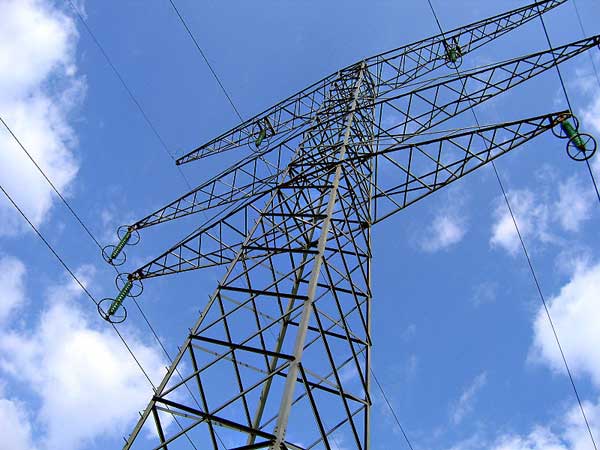In the intricate world of high-voltage engineering, achieving optimal power transmission efficiency is a pursuit that demands precision, innovation, and a deep understanding of electrical systems. Among the key contributors to corona rings this efficiency is the often-overlooked hero—the grading ring. Also known as corona rings or anti-corona rings, these unassuming components play a pivotal role in shaping the efficiency and reliability of power transmission. This exploration dives into the engineering excellence inherent in grading rings and the profound impact they wield on enhancing power transmission efficiency.
1. Shaping Electric Fields with Precision
At the core of grading rings’ impact lies their ability to shape electric fields with precision. As voltage levels escalate, the risk of corona discharge—an electrical discharge caused by the ionization of air surrounding conductors—increases. Grading rings strategically placed on these conductors act as architects, optimizing electric field distributions to mitigate the risk of corona discharge. This precision engineering ensures a more uniform field and sets the stage for enhanced power transmission efficiency.
2. Minimizing Energy Losses through Prevention
Energy losses in high-voltage systems often occur as a result of corona discharge. Grading rings, by their very nature, take a proactive approach to minimize these losses. Their strategic placement and design prevent the grading rings ionization of air and subsequent corona discharge, ensuring that the energy intended for transmission reaches its destination with minimal losses. This preventative measure becomes a cornerstone in the quest for heightened power transmission efficiency.
3. Applications in Overhead Transmission Lines
Grading rings find prominent applications in overhead transmission lines, where the challenges of corona discharge are particularly pronounced. Their strategic placement along these lines contributes significantly to stabilizing electric fields, preventing corona discharge, and, consequently, enhancing the overall efficiency of power delivery over vast distances. Grading rings emerge as indispensable components in fortifying the reliability of power transmission systems.
4. Extending Insulator Lifespan for Prolonged Efficiency
Insulators, vital components in maintaining electrical integrity, benefit significantly from the impact of grading rings. By preventing corona discharge-induced damage, grading rings extend the service life of insulators. This extension not only ensures prolonged efficiency but also reduces maintenance needs, contributing to the overall reliability of high-voltage systems. The influence of grading rings on insulators becomes a key factor in optimizing power transmission efficiency.
5. Versatility in Component Efficiency
Grading rings showcase versatility in their applications, contributing to the efficiency of various high-voltage components. From transformers to circuit breakers and switchgear, their influence ensures consistent electric field management, enhancing the reliability and efficiency of diverse elements within the electrical infrastructure. This versatility underscores the comprehensive impact of grading rings on optimizing power transmission efficiency across a spectrum of components.
6. Precision Engineering for Real-World Performance
The excellence of grading rings lies in the precision engineering applied to their design and application. Engineers continuously refine materials, configurations, and placement techniques to maximize their effectiveness. This commitment to precision engineering ensures that grading rings are finely tuned solutions tailored for optimal performance in real-world high-voltage scenarios. Innovations in design become a driving force in fine-tuning grading rings for maximum efficiency in power transmission.
7. Computational Simulations for Optimal Design
Grading rings benefit significantly from computational simulations, facilitating optimal design and application. Engineers employ sophisticated modeling techniques to simulate electric field distributions, predict corona behavior, and iteratively optimize the design of grading rings. This scientific approach ensures that grading rings are not just components but precision-engineered solutions tailored for optimal performance. The use of computational simulations guides grading rings in their critical role within high-voltage systems.
8. Environmental Adaptability for Uninterrupted Efficiency
Operating in diverse environmental conditions, grading rings showcase adaptability. Their ability to withstand extreme temperatures, humidity, and pollution ensures uninterrupted efficiency in a variety of scenarios. This adaptability contributes to the overall robustness and reliability of high-voltage systems, demonstrating the commitment of grading rings to maintaining efficiency regardless of environmental challenges.
9. Integration with Smart Grid Technologies
In the era of smart grids, grading rings integrate seamlessly with advanced technologies. Their incorporation into smart grid systems allows for real-time monitoring and data-driven decision-making. By providing insights into electric field dynamics and potential stress points, grading rings contribute to the intelligence of the grid, enabling proactive maintenance and optimizing the performance of electrical networks. This integration aligns with the ongoing evolution of power transmission towards smarter, more efficient grids.
10. Future Prospects: Innovations for Next-Level Efficiency
Looking ahead, grading rings hold the promise of contributing to innovations that push the boundaries of power transmission efficiency. As research and development progress, grading rings may evolve with enhanced features, materials, and designs, further reinforcing their impact on power transmission efficiency. The ongoing commitment to engineering excellence positions grading rings at the forefront of the journey towards next-level efficiency in high-voltage systems.
Conclusion: Grading Rings as Pioneers of Efficiency
In conclusion, grading rings emerge as pioneers of efficiency in the realm of high-voltage engineering. Their impact on power transmission efficiency, achieved through precision engineering, preventative measures, and adaptability, underscores their significance in shaping the reliability of electrical systems. As the quest for efficiency continues, grading rings stand as testament to engineering excellence, playing a pivotal role in advancing the frontiers of power transmission technology.
